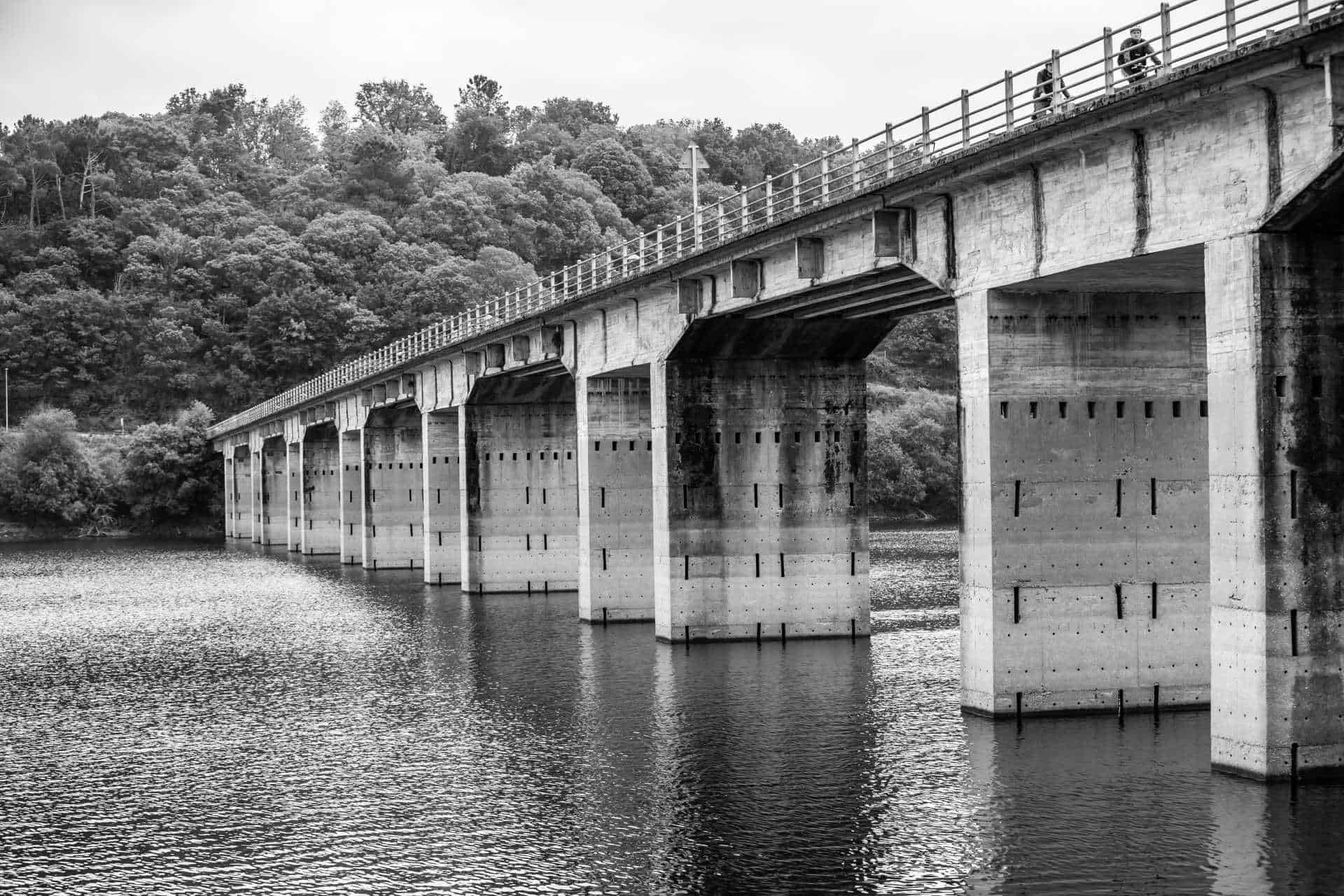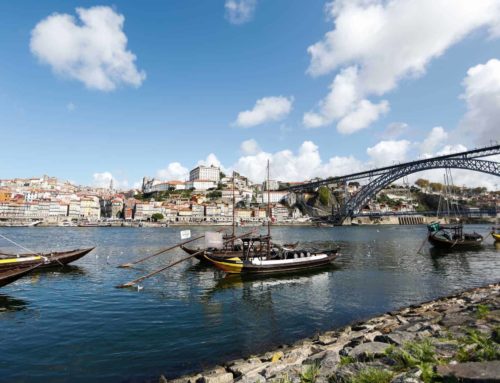Portomarin is a beautiful small town located in the Spanish province of Lugo. Should you walk the Camino Frances, you would arrive to the town of Portomarin on Stage 27 of your walk; or this inviting town could be your first stop on the Camino de Santiago should you walk the last 100 KM from Sarria.
Not only is the town an enchanting village sprawled on the side of the lush green hills of Lugo accommodating thousands of pilgrims each year, it was a very important village during the Roman times due to its riverside location. Portomarin has always had a long bridge to cross over the wide Mino River, allowing access for years gone by. The town was even named “porto,” meaning river crossing, in Galician. Should you enter the town when the river is low, you will see the old roman bridge below the modern viaduct you use today. The height of the bridge is staggering when the water is low, but if you can handle the height, look closer and you will see more remains of the old roman village in the dry river banks.
Skipping ahead in time, the old town of Portomarin was flooded when the Belesear Reservoir was built in the 1960’s. In order to conserve the historical buildings, each structure was taken down and incredibly moved stone by stone. This entire town was reconstructed with a number system like a large 3D puzzle. You can still see numbers inscribed on the individual stones of some of the older buildings.
The most famous of these buildings is the Church of San Nicolas. As you walk into the town, about four kilometers out, you can see the small skyline of Portomarin which is overshadowed by the square edges of this church. It is an unusual church as the structure was designed as both a church and a fortress. This church was built in the 12th century and has a spectacular rose window on the main facade. The name has actually changed numerous time due to the frequency it was gifted to Spanish royalty. Many also call this the Church of Santa Marina.

As you leave this charming town, take note of the forest you climb on your first stretch of the day. Dating back as far back to the 15th century, writings reported that prostitutes hid in the forest as pilgrims exited the town, desperately trying to solicit business in order to survive those harsher times. Many of these woman would have their faces covered with shawls, as legends reports, the punishment for prostitution was to have your nose cut from your face. We have yet to spot any of these women in present day, but do let us know if you are approached by a shawled woman!






